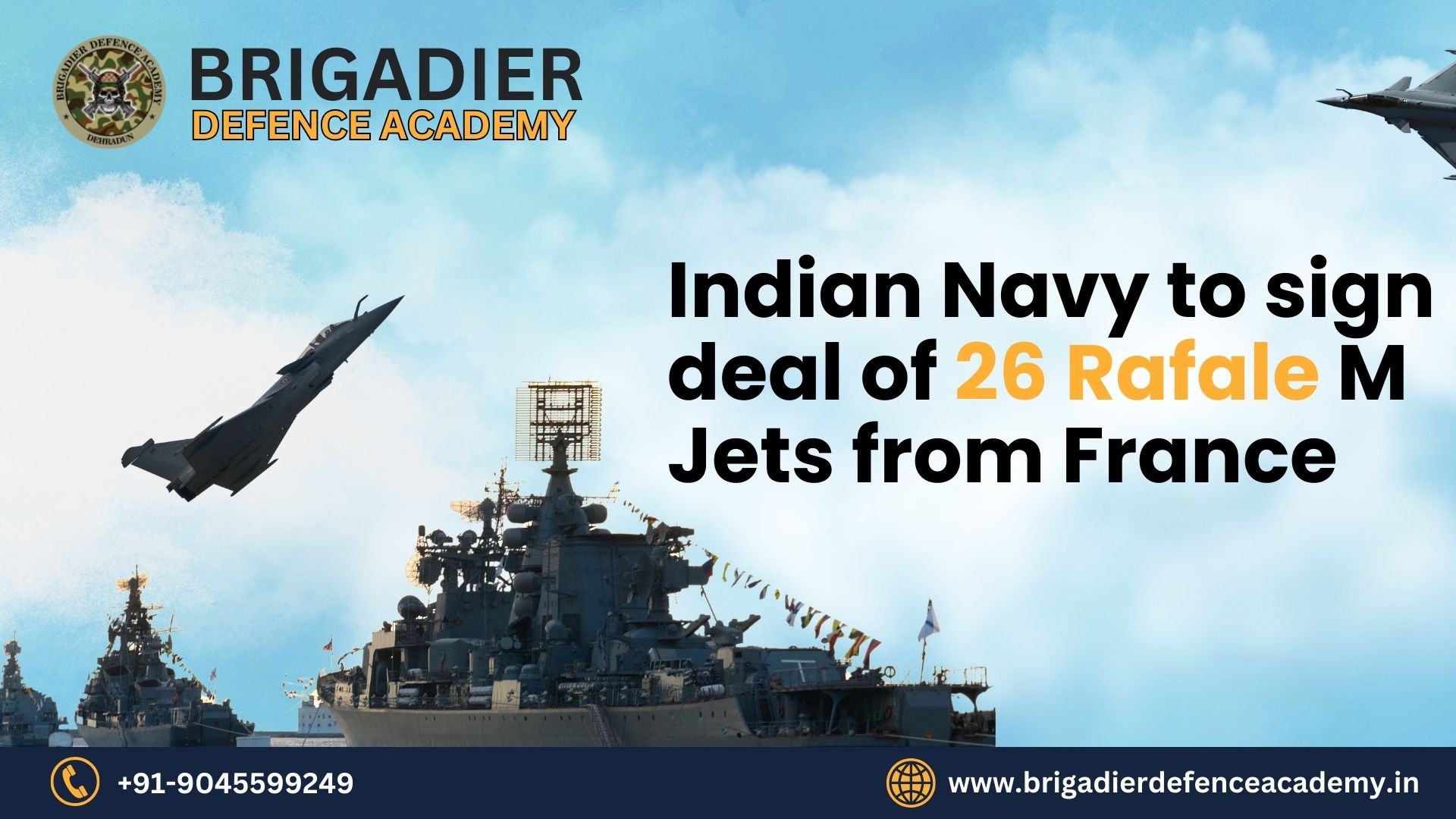Indian Navy to sign deal of 26 Rafale M Jets from France
The Indian Navy’s pursuit of modernization and enhancement of its maritime capabilities takes a significant leap forward with the decision to acquire 26 Rafale M fighter jets from France. This deal marks a crucial milestone in India’s defense strategy, particularly in bolstering its naval aviation arm. The Rafale M, known for its versatility, advanced technology, and combat prowess, will play a pivotal role in securing India’s maritime interests in the Indian Ocean Region (IOR) and beyond.
Background of Indian Navy Aviation
Naval aviation in India has a rich history, dating back to the establishment of the Indian Naval Air Arm in 1953. Over the years, the Navy’s aviation capabilities have evolved, with the induction of various aircraft carriers and advanced fighter jets. The Indian Navy currently operates two aircraft carriers, INS Vikramaditya and INS Vikrant (under construction), and is poised to become a formidable force in the region.
Significance of Rafale M Acquisition
The decision to acquire Rafale M jets underscores the Indian Navy’s commitment to modernize its fleet and enhance its operational capabilities. The Rafale M, a naval variant of the Rafale fighter jet, is renowned for its advanced avionics, cutting-edge radar systems, and superior combat capabilities. Its ability to operate from aircraft carriers makes it an invaluable asset for naval operations, including air defense, maritime strike, and reconnaissance.
Strategic Importance in the Indian Ocean Region
India’s strategic location in the Indian Ocean Region makes it imperative to maintain a robust naval presence to safeguard its maritime interests. The acquisition of Rafale M jets will significantly enhance the Navy’s ability to conduct long-range maritime patrols, deter potential threats, and respond swiftly to emerging security challenges in the region. The Rafale M’s extended range and endurance will enable the Indian Navy to effectively monitor vital sea lanes, protect maritime trade routes, and counter maritime threats.
Enhancing Interoperability and Joint Operations
The induction of Rafale M jets will further enhance interoperability between the Indian Navy and the Indian Air Force (IAF), facilitating joint operations and integrated air defense capabilities. The commonality of platforms and systems between the Rafale M and the Rafale fighters operated by the IAF will streamline logistics, maintenance, and training processes, thereby optimizing operational efficiency and readiness.
Technology Transfer and Indigenous Manufacturing
The Rafale M deal is not only about acquiring advanced fighter jets but also entails technology transfer and opportunities for indigenous manufacturing. Under the Make in India initiative, France has agreed to transfer critical technologies to India, enabling the indigenous production of Rafale components and subsystems. This transfer of technology will not only boost India’s defense manufacturing capabilities but also stimulate economic growth and create job opportunities in the defense sector.
Strengthening Naval Air Power Projection
Naval air power projection plays a vital role in enhancing the Navy’s reach and effectiveness in conducting maritime operations. The Rafale M’s unmatched combat capabilities, including its ability to carry a wide range of weapons and sensors, will significantly enhance the Navy’s offensive and defensive capabilities. With its advanced radar and missile systems, the Rafale M will enable the Indian Navy to conduct precision strikes against both surface and air targets, thereby deterring potential adversaries and safeguarding India’s maritime interests.
Operational Flexibility and Versatility
The Rafale M’s versatility and multi-role capabilities make it well-suited for a wide range of missions, including air defense, anti-ship and anti-submarine warfare, reconnaissance, and maritime interdiction. Its advanced sensor suite, comprising radar, electronic warfare systems, and infrared search and track (IRST) capabilities, provides the Indian Navy with a significant advantage in detecting and engaging threats across the maritime domain. Moreover, the Rafale M’s ability to carry a variety of air-to-air and air-to-surface weapons ensures operational flexibility in diverse scenarios.
Training and Skill Development
The acquisition of Rafale M jets will necessitate comprehensive training programs for naval aviators, maintenance personnel, and ground crew. The Indian Navy will collaborate with the French Navy and Dassault Aviation to develop training modules and simulators to ensure that personnel are proficient in operating and maintaining the Rafale M aircraft. These training programs will not only enhance operational readiness but also contribute to skill development and knowledge transfer within the Indian Navy.
The Indian Navy’s decision to acquire 26 Rafale M fighter jets marks a significant milestone in its quest to modernize and enhance its maritime capabilities. The Rafale M, with its advanced technology, combat capabilities, and versatility, will strengthen the Navy’s ability to safeguard India’s maritime interests, deter potential threats, and project power across the Indian Ocean Region. Moreover, the Rafale M deal signifies a strategic partnership between India and France, encompassing technology transfer, indigenous manufacturing, and cooperation in defense training and skill development. As the Indian Navy continues its transformation into a modern, blue-water force, the induction of Rafale M jets will undoubtedly play a pivotal role in shaping its future operational capabilities and ensuring maritime security in the region.







